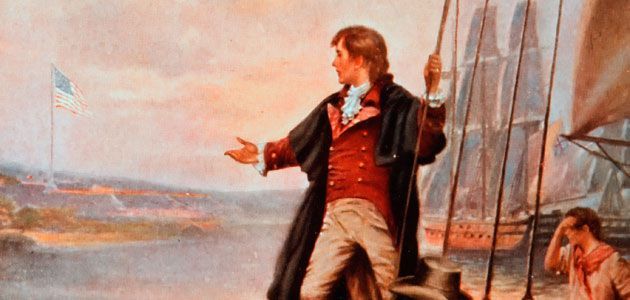Like millions of other Americans, I woke up on March 26 to the horrible news that a ship had run into the Francis Scott Key Bridge in Baltimore, Maryland harbor in the early morning hours, collapsing a major section of the 1.7-mile structure.
Of the eight construction engineers who had been working on the bridge at the time of the collision, two were found in the water below One was taken to hospital in critical condition, and another seemed to have suffered no injuries. As of April 1, two bodies have been recovered and four are still missing but are presumed dead. The fast action by operators aboard the ship in warning officials on land certainly saved many more lives.
Related:
Rightwingers say the bridge collapsed because Pete Buttigieg is gay
Even George Santos joined in the frenzy of conservatives saying the bridge collapsed because Buttigieg talked about racism in 2021.
We grieve for the victims of this tragedy and their families, and for the beautiful and resilient city of Baltimore and all its residents during this difficult time.
Dive deeper every day
Join our newsletter for thought-provoking commentary that goes beyond the surface of LGBTQ+ issues
While covering the disaster, several of the reporters and analysts presented a rather one-dimensional portrait of the person after whom the bridge is named: Francis Scott Key.
Key, a 35-year-old lawyer and amateur poet, wrote his “Defense of Fort McHenry” (the lyrics to what would become the “Star-Spangled Banner”) after beholding British ships of the Royal Navy striking Fort McHenry in Baltimore Harbor during the War of 1812.
Key was inspired by the large American flag, the Star-Spangled Banner, raised exultantly above the fort during the U.S. victory.
One of Key’s original lines states, “And the rocket’s red glare, the bomb bursting in air, gave proof through the night that our flag was still there.” Rockets and bombs later became plural.
Ironically, the poem was set to the tune of “To Anacreon in Heaven,” a popular British drinking and womanizing song written by John Stafford Smith for the Anacreontic Society.
The practice of playing “The Star-Spangled Banner” at sporting events reportedly began during WWI on September 6, 1918, during the first game of the World Series between the Chicago Cubs and the Boston Red Sox.
An account of the moment from the New York Times states, “As the crowd of 10,274 spectators — the smallest that has witnessed the diamond classic in many years — stood up to take their afternoon yawn [7th inning stretch]… the band broke forth to the strains of ‘The Star-Spangled Banner.’ The yawn was checked and heads were bared as the ball players turned quickly about and faced the music…. First the song was taken up by a few, then others joined, and when the final notes came, a great volume of melody rolled across the field. It was at the very end that the onlookers exploded into thunderous applause and rent the air with a cheer that marked the highest point of the day’s enthusiasm.”
The idea quickly caught on and spread, even though the “Star-Spangled Banner” was not officially proclaimed through a congressional resolution as the U.S. National Anthem until March 4, 1931, under Herbert Hoover’s presidency. The Maryland bridge named for him opened in 1977.
Today, the song’s first verse kicks off numerous events in addition to sports. Usually omitted, though, is the third of four original verses, which some interpret as racist.
“And where is that band who so vauntingly swore, that the havoc of war and the battle’s confusion a home and a country shall leave us no more? Their blood has wash’d out their foul footstep’s pollution. No refuge could save the hireling and slave, from the terror of flight or the gloom of the grave, and the Star-Spangled Banner in triumph doth wave, o’er the land of the free and the home of the brave.”
“No refuge could save the hireling and slave” has been interpreted as a not-so-veiled threat against mercenaries and Africans enslaved in the United States who joined the British after promises of freedom if they fought with them.
Key and his family enslaved people. He supported the idea of deporting free Black people to Africa and opposed the abolition of slavery in the United States.
His controversial personal history has made us reevaluate whether we wish to construct landmarks in his honor. For example, in June 2020, protestors in San Francisco took down a statue of Key.
I hope in the future, reporters and commentators will provide a more accurate and fuller accounting of the personalities they highlight. Maybe Baltimore City officials will consider another person to whom they will honor the reconstructed version of the bridge.
Don't forget to share:















Francis Scott Key was no hero